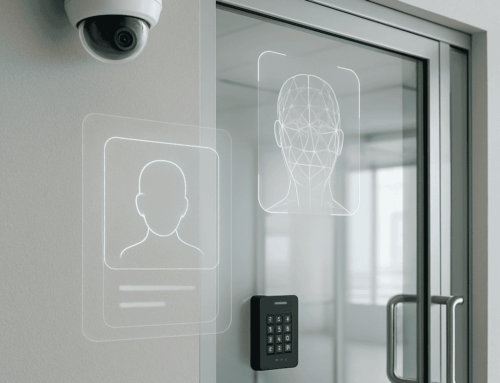Mantraps: Why they’re critical to high security access control systems

What Is A Mantrap?
A mantrap is an arrangement of doors with a passageway between them. The defining characteristic of a mantrap is that only one door can be open at a time, with the intention to only allow a single person to pass through.
A mantrap is one type or component of an access control system that is used to prevent unauthorized access to a facility as well as help maintain sterile or secure environments. They often use technology such as RFID badges or biometric scanners to verify the person attempting to pass through.
How Do Mantraps Work?
In its simplest form, a mantrap consists of two locking doors and a passageway. They commonly include a security guard who can monitor the mantrap and enforce the security protocols. A mantrap also needs to allow free passage in the event of a fire or evacuation — this caveat requires the mantrap system to be integrated with the building’s fire alarm system so that the locking doors release when the alarm is activated. Conversely, both doors of the mantrap should lock in the event of a security breach, hopefully trapping the intruder, or preventing easy escape from the inner building.
Thanks to digital technology, there are plenty of fully automated mantraps that use a combination of ID verification, weight sensors, video monitors, and network connectivity so the process can be mostly hassle-free and fully secure.
A mantrap does not work if it allows multiple people to enter the vestibule space at a time or is easily overridden by personnel inside the building.
Role Of Mantraps In Access Control Systems
One of the primary scenarios that mantraps address is “piggybacking” or “tailgating” where an authorized person verifies their identity and holds the door open for another user, allowing the second person to side-step the security check. Often seen as a courtesy to hold the door for someone, it’s a major vulnerability for organizations that need to prevent any unauthorized access, such as hospitals, high-security businesses, government facilities, and airports.
Advantages Of Mantraps
Thanks to automation technology, using programmable logic controllers (a purpose-built computer) a mantrap can operate successfully with no human supervision — if an identity verification process such as an RFID or biometric scanner is in place.
Although it isn’t the primary purpose, a mantrap is true to its name, because it can hold an individual between the two lockable doors if necessary. So it allows people to enter in the first door, perhaps with no ID verification, but if they’re unable to pass the second door by verifying their ID both doors lock until a security guard can arrive and choose the next best action.
Mantrap Use Cases
Mantraps are more common than you might imagine. And if they’re accompanied by a security guard, you may not even realize that you’re passing through one. Often it just looks like a two-door vestibule.
Mantraps are used when the building operators need to distinguish between authorized and unauthorized individuals and quickly prevent unauthorized people from entering or escaping once caught.
Data Centers
Physical security is a major priority at data centers. Of course, hackers can try to penetrate the network virtually, but if a hacker can gain entry in the guise of an employee, they can steal valuable assets and cause extensive damage.
Using mantraps at every building entry and exit point is a good way to limit the risk of intruders compromising the security of the data center.
Casinos
Although casinos are a business that thrives on traffic, they also need to maintain strict security, including preventing any banned individuals from entering the premises.
Mantraps with security personnel or even face-recognition technology allow the casino to let most people enter and exit freely.
Schools
As school shooters rise in frequency, many schools are installing mantrap vestibules to control guest traffic and create secure barriers against violent intruders or potential combatants.
Although schools don’t tend to use strict ID verification protocols for students, they do have strict visitor policies for anyone else. Mantraps make the visitor policy much easier to enforce.
Medical Facilities
Similar to schools, hospitals, and other medical facilities need to allow large numbers of people to easily enter or exit, while also preventing unauthorized people from gaining access.
Also like schools, hospitals cannot require every visitor to have an ID badge or to pass a biometric scan. Mantraps and attending security guards can monitor visitor traffic and ensure that only approved visitors and patients are allowed inside.
About i.e.Smart Systems
i.e.Smart Systems is a Houston, TX based technology integration partner that specializes in design and installation of audio/visual technology and structured cabling. For more than three decades, our team of in-house experts has partnered with business owners, architectural firms, general contractors, construction managers, real estate developers, and designers in the Houston market, to deliver reliable, scalable solutions that align with their unique goals.




